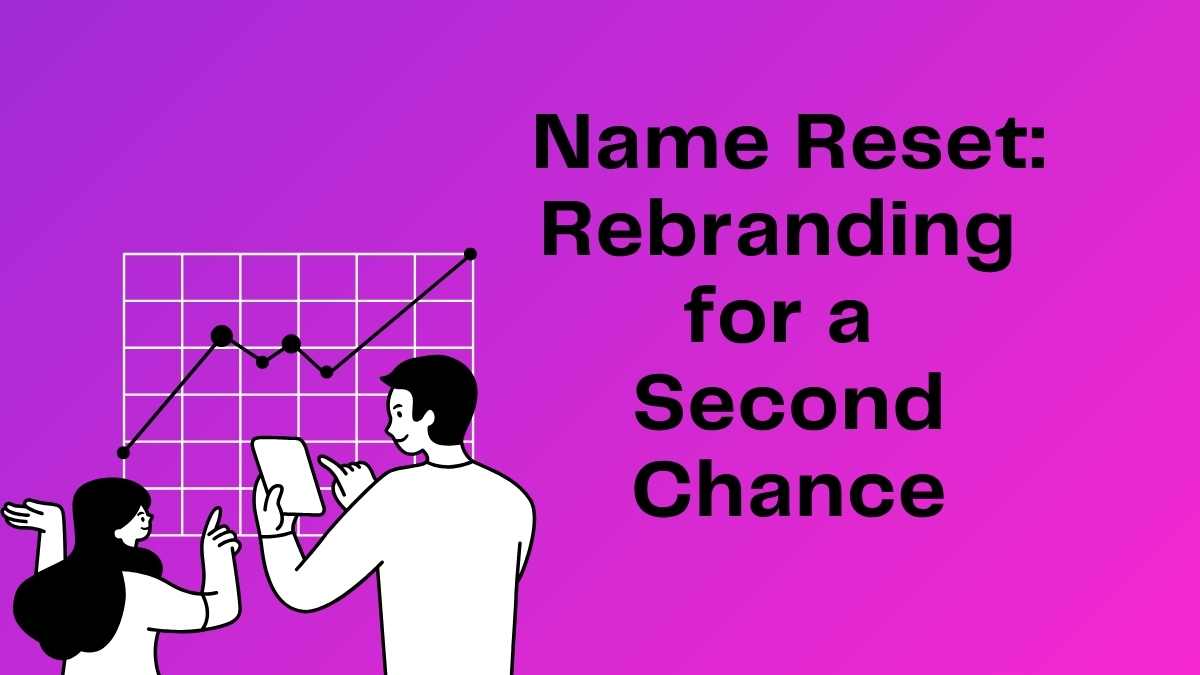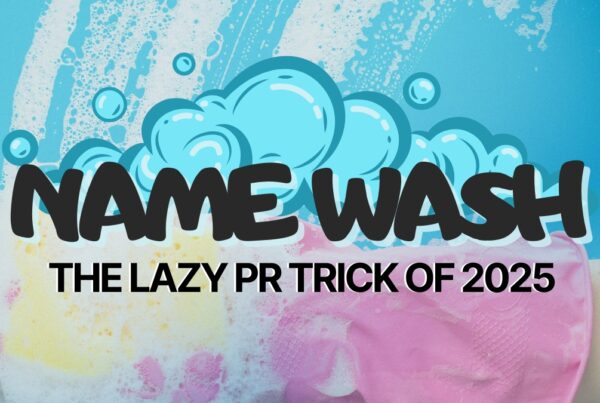Why Changing Your Name Can Change Everything
There comes a point in many brands’ lives when the name they started with no longer fits. It might have been unreasonable. It might not have worked. Perhaps it was a little quick or a little too brilliant. Or perhaps the company has changed so much that the name no longer feels like an identity but rather like an anchor.
In many situations, rebranding is about survival, clarity, or a new beginning rather than perfection. Businesses and artists get a second opportunity to reveal their true selves to the world through rebranding.
The reasons why individuals reset their brand names, how to do it correctly, and what to avoid if you don’t want to lose the trust you’ve already gained will all be covered in this article.
Why Brands Rebrand
1. Growth Outpaces the Name
Startups frequently give themselves names based on their initial product or target market. However, your initial name may no longer seem suitable if your company expands beyond that point. Consider Facebook’s rebranding of its parent company to Meta, which represented a vision much beyond social networking.
2. Negative Associations
Sometimes, a name gets attached to something the brand didn’t expect. A name reset can help you move past baggage and start over, regardless of the cause—a PR catastrophe, a legal problem, or just terrible timing (such as sharing a name with a controversial person or movement).
3. International Expansion
Not all words get across effectively. In one language, a brand that sounds fantastic may be unpleasant, rude, or meaningless in another. Global businesses sometimes rethink names to be effective in different markets.
4. Mergers and Acquisitions
When two businesses merge, they typically need a new name that fits the new structure, ownership, or product. Reintroducing the brand to the market may also be possible with this option.
5. Creator Pivots
For creators, a name change may indicate a change in audience, substance, or purpose, particularly in the internet realm. Rebranding aids in bridging the gap between new and existing fans if an individual began as a comedic YouTuber and now hosts a serious business podcast.
How to Know It’s Time for a Name Reset
A rebrand shouldn’t be based on boredom or insecurity. It should be intentional. Here are a few signs that it might be time:
- Customers are confused about what you do
- You constantly have to explain or spell your name
- Your name limits your growth into new products or markets
- Your online presence is hard to search or compete for
- You’ve had a major shift in your business or identity
If these resonate, it’s probably time to explore new possibilities.
How to Rebrand Without Losing Your Audience
Step 1: Be Clear on the Reason
If you don’t know why you’re changing your name, your audience won’t either. Be honest about what’s not working and what the new name needs to solve.
Step 2: Define What the Name Should Say
Before you brainstorm, get clear on your brand values, tone, and goals. Is your brand casual or formal? Youthful or trusted? Narrow or broad?
Step 3: Involve the Right People
You don’t need 100 opinions, but it helps to include key voices — from team members to loyal customers. This helps stress-test names and catch blind spots.
Step 4: Secure Your Assets
Before you fall in love with a name, check domain availability, social handles, trademarks, and SEO strength. Don’t commit until you know it’s viable.
Step 5: Announce With Confidence
When you launch the new name, explain why. Tell the story. Help your audience feel part of the transition. Don’t just update your logo — update your message.
Famous Examples of Name Resets
- Backrub → Google: Their original name didn’t exactly scream “world’s biggest search engine.”
- Brad’s Drink → Pepsi: A name change that helped the brand go national and compete with Coca-Cola.
- Burbn → Instagram: The original app was about location check-ins — not photo sharing.
- Twttr → Twitter: Dropping the vowels made sense in 2006, but spelling them out helped with accessibility and brand clarity.
Lessons From Brands That Got It Right
Simplicity Wins
A lot of the most successful rebrands aim for something brief, simple to say, and memorable. Your new name might not catch on if it sounds too planned or tries to be too clever. When it comes to names, clarity is preferable to creativity.
Don’t Just Change the Name — Change the Story
A single component of the puzzle is the name change. What sticks is how you arrange it, discuss it, and build upon it. Take use of the opportunity to reintroduce your goal and ideals to the public under the new brand.
Plan for the Long Haul
A name change is more than just a temporary fix. You’re making a decision that will likely last for years or even decades. Don’t choose a name just because it’s trendy or popular at the moment. Pick something that you can develop into.
Audience Buy-In Matters
Your audience might have emotional ties to the old nameRespect that and include them in the story of what comes next. People are more inclined to stay on board when they feel like they belong.
When a Rebrand Doesn’t Work
Rebranding is not always successful, despite its potential power. Some businesses make the error of rebranding without a defined plan, which might cause them to lose their loyal customers. A frequent problem is when the new name seems unrelated to the previous brand’s principles. Another is when a shift is abrupt and poorly explained, which leaves supporters confused or doubtful.
The name change may not work if it is only cosmetic and not supported by a significant change in the brand itself. Aligning with your present and future is more important for a successful rebrand than concealing your past. Even the best-designed name may feel meaningless without that connection.
The Internal Shift That Follows a Name Reset
External rebranding frequently leads to inside rebranding as well. Clarity regarding duties, culture, and purpose can be achieved when a team unites under a new identity. A well-timed name change allows founders to reaffirm the company’s long-term goals to partners, investors, and workers as well as to customers.
However, it can also lead to conflict. It’s possible that some team members feel as though the brand they supported is being lost. During this stage, clear communication is equally as crucial as external messaging. Assist your staff in viewing the rebrand as growth rather than a sign of failure.
The Emotional Weight of Naming
Names have personal significance, even though we don’t always acknowledge it. Founders may feel as though they are losing a piece of their identity when they change their name. Loyal customers may associate their personal history with your brand with the previous name.
It’s acceptable to admit that. A well-considered name change honors the past while indicating progress rather than acting as though it never happened. Before switching to the new name, some brands even run a brief “goodbye” campaign for the previous one. This brings people together, offers closure, and honors the journey.
Consider the Rollout Timeline
Don’t flip the switch overnight unless you have to. You can lead your audience through the transition with a staged release. You can give hints about what’s to come, explain why the new name was chosen, and tease it beforehand. Instead of creating confusion, this creates anticipation.
Additionally, give transparency first priority if you must act quickly because of legal concerns or a public relations problem. A brief statement outlining the incident can have a significant impact on people’s reactions.
Think Beyond the Logo
A name reset isn’t just a visual update. Consider how your copywriting, tone, strategy, and brand voice should change over time. This is your opportunity to have a consistent brand voice, appearance, and behavior. Your messaging should be bolder if your new name is. Your offerings should be in line with it if it is more targeted.
Everything should convey the new name’s meaning, from your website to the tone of your customer service. This consistency is what builds credibility.
Final Thoughts
Owning your future is the goal of a name reset, not escaping your past. The correct name can open up new doors and better align with who you’ve become.
Don’t rush it, though. Your name is more than simply a label; it’s how people react to, remember, and discuss you. If you do it correctly, it can lead to opportunities you were unaware of.
The same principle applies to your startup. Your name sets the tone before your product ever gets seen. Want to make yours unforgettable? Read our next article: How to Choose a Name That Makes Your Startup Stand Out.




